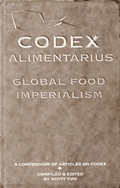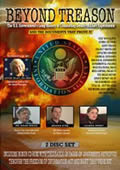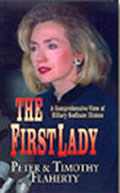TRADING
EQUAL PROTECTION FOR EMPATHY
PART 2 of 2
By
Jon Christian Ryter
June 7, 2009
NewsWithViews.com
The Ricci Case
It the 2004 case of Ricci v Destefano. This case concerns a dyslexic 11-year veteran fire fighter named Frank Ricci who flunked a civil service exam for promotion to lieutenant in the New Haven, Connecticut fire department a year or two before he finally passed it. Ricci didn't know he was dyslexic until he flunked his first attempt to pass the exam. Determined to overcome his handicap, Ricci quit his second job (the income from which his family desperately needed to supplement his civil service income). He bought a thousand dollars worth of textbooks. Because of his dyslexia, he had a friend read the textbooks onto cassette tapes. He studied every spare waking moment, even robbing many "moments" during which he should have been sleeping. There were eight lieutenant slots open and he was determined to win one of them.
One hundred eighteen firefighters took the civil service exam in 2004. Ricci scored sixth. He won a lieutenancy. The problems arose when the results were posted. None of the eight who qualified for promotion were black. In fact, even though several Hispanics took the test, seven of the "winners" were white, one was Latino. Even before the seven white guys and one Hispanic could say, "Oh, oh..." 17 black guys filed a grievance, claiming the exams were rigged against them. Had half of the white guys who scored high enough to win promotion been black, all of them would have been on their way to becoming lieutenants or captains. But, that wasn't the case.
The City of New Haven, Connecticut quickly threw the proverbial fire engine into reverse and canceled all of the promotions until they could figure out how to guarantee that a fair amount of those promoted would be African-American. In 21st century America racism endures. But now it is racism against the new minority?white maless. The City of New Haven, in shelving the promotions, said that the "disparate impact" of the test penalized the black community and that affirmative action must cast a wider net to ensure that everyone had an equal shot at promotion. As it turns out, only half of the test score for the fire department was based on the written exam. The balance was based on an oral exam administered by fire department experts from all over the country. The oral segment of the test included multiple components dealing with the individual fireman's leadership skills, judgment under fire, ability to lead first responders in an emergency and how they would handle a variety of scenarios in the field.
Ricci filed suit. The case, Civl No. 3:04cv1109(JBA) was heard in the US District Court for the District of Connecticut before US District Court Judge Janet Arterton. Ricci and 16 other white fire fighters, and one Hispanic firefighter, who scored high enough to benefit their careers, sued the City of New Haven and a host of other city officials and two officials of the Connecticut State Board which certifies the results of the test. Seventy-seven of the 118 firefighters took the Lieutenant's exam. Forty-three were white, 19 black and 15 Hispanic. Of the 34 who passed the test, 25 were white, 6 were black and 3 were Hispanic. The top six scorers for the eight slots were white, which meant two Hispanics, who scored 7th and 8th won the other two slots. The black candidates scored 14th, 16th, 19th, 20th, 22nd and 24th.
Judge Janet Bond Arterton, a Bill Clinton appointee, ruled on Sept. 28th, 2006 that the plaintiffs had no standing to file under an Equal Protection under the law claim, agreeing with the City of New Haven that the tests reflected disparate treatment since all of the African-American candidates failed to qualify. Ricci and his co-plaintiffs appealed to the 2nd Circuit Court of Appeals. In writing the majority opinion for the 2nd Circuit, Sotomayor affirmed that in Arterton's opinion the City of New Haven did not need to certify the results of the tests since if they had, it would have opened them to a lawsuit for violating Title VII of The Civil Rights Act of 1964's disparate impact prohibition. Going a step farther, Sotomayor issued a per curiam opinion praising Arterton for a thorough and well-reasoned opinion. Sotomayor went on to state that the City of New Haven could not be held liable for its failure to certify the promotions since it was simply fulfilling its obligations under Title VII. Three days after the 7-to-6 ruling, the six dissenting judges asked for a rehearing. It was denied by the seven judge majority. The six dissenters then prepared an opinion which questioned the court's judgment. That opinion became the basis for Ricci's Supreme Court challenge.
Arterton, like Sotomayor, had no judicial experience before being appointed to the bench. Arterton was a law clerk for US District Court Judge Herbert Stern for about a year from 1977 to 1978. She had a private law practice in New Haven from 1978 to 1995 when Clinton appointed her.
Her most controversial case involved the Violence Against Women Act of 1994, enacted by Clinton's Democratically-controlled Congress a few months before the GOP's Contract With America. The case she heard followed Brzonkala v Morrison and Crawford which served to overturn the Violence Against Women Act. In the first case, 23-year old Christina Brzonkala claimed she was raped by fellow student Antonio Morrison while James Crawford watched. Morrison claimed Brzonkala was a willing participant who simply had "buyer's remorse." Crawford was able to convince the grand jury that he was not even in the room when the sexual activity took place between Morrison and Brzonkala. Crawford was charged with disorderly conduct for an altercation with police in the parking lot outside the building where the rape supposedly took place. Because of the rape allegation, Crawford lost his scholarship at Virginia Tech and returned home to Florida.
The grand jury did not buy Brzonkala's story and refused to indict. She sued for cilvil damages under the Violence Against Women Act, which federalized crimes against women. US District Court Judge Jackson L. Kiser found the Violence Against Women's Act to be an unconstitutional application of the commerce clause. Desperate to repatriate Public Law 103-322, Clinton was pleased when Arterton took on a similar case. Unlike Kiser, in Arterton's courtroom, she found that "...violence against women has a substantial impact on commerce." She ruled to uphold Public Law 103-322. In a 5-to-4 decision, the Supreme Court overturned the civil rights aspects and the commerce clause application of the Violence Against Women Act, gutting the law. In 2005, the left-leaning Republican-controlled Congress changed the verbiage and reenacted the law as the Violence Against Women and Department of Justice Reauthorization Act.
Sotomayor's Philosophical History
Sotomayor will forever be tied to Arterton over the 2004 case, Ricci v Destefano. Both judges are bad jurists because both believe "empathy" plays a role in good jurisprudence. To the far left, both are good soldiers in the war to deconstruct the Constitution of the United States and, by practice, to mold it into the UN Covenant on Human Rights where all rights are conditional upon the whims of government.
To hear the rhetoric of the liberal media—together with an array of liberal talking heads and a hostt of lawyers and far left constitutional scholars—discuss her 17-years on the benchh, Sotomayor has been the epitome of a cautious jurist who respects historic precedents and is ever mindful of the rule of law. Conservatives counter that her words and actions over the years have been a litany of reverse racism and intolerance for anyone who disagrees with her views.
Even as she denies judicial activism, she laughing admitted during a panel discussion at Duke University in 2005 that it's "...at the Court of Appeals level is where policy is made." quickly adding that because the discussion was being recorded, she "...should never have said that because we don't make law. Having said that," she added, "the Court of Appeals is where...before the Supreme Court makes the final decision, the law is percolating—its interpretatioon, its application. And, Judge (...) is right, I often explain to people when you're on the District Court, you're looking to do justice to the individual case. So you're looking much more into the facts of the case then you are to application of the law because the application of the law is not a precedent, so the facts control. On the Court of Appeals, you are looking to how the law is developing so that it will them be applied to a broad class of cases. So, you're always thinking about the ramifications of this ruling on the next step in the development of the law." When you speak of the "development" of what is legally construed to be settled law, you are speaking of the evolution of the law to fit an evolving society. That is judicial activism. Sotomayor is a judicial activist who strongly believes that "good law" is a blend of legal decisions not only from the United States, but the international courts, flavored with what she calls "empathy"—which translates to, her peet prejudices tempering the bluntness of the rule of law if the law leans too far in the wrong direction.
Without checking beyond the moderate window dressing, several pro-life Christian leaders including Catholic League president Bill Donahue have thrown their support to Sotomayor, who is Roman Catholic. Donahue said he is quietly rooting for her confirmation, adding that he believes Sotomayor's record contains more bright spots than conservative Catholics can reasonably expect from any Obama candidate for the high court. Donahue admitted he "...knew more about her. But from what we know, it looks like she'll be at least a wash with Souter, and maybe we'll even see improvement." Sadly, that will not be the case. Souter, on his worst day, will be better than Sotomayor on her best day.
While Souter and the liberal members of the high court as well as many of those on the appellate courts attended globalist indoctrination classes at the Hague (which encourage US federal judges to draw from international case law in rendering US court decisions thereby diluting the US bill of rights), Souter nevertheless follows the logic of the rule of law even though he bends it to the left almost beyond the point of endurance. Sotomayor, who also ascribes to the globalization of US law, is far more radical than Souter. When then House Judiciary Committee Chairman James Sensenbrenner offered up House Resolution 97 on Feb. 15, 2005, in an attempt to bann federal judges from citing international law in their rulings, the 109th Congress enacted it. Sotomayor quickly condemned the action of the House of Representatives. Judge Sotomayor is not only an ardent advocate of the use of international law in US court cases, she is an advocate of what is known as "legal realism," a judicial philosophy that allows US judges to ignore the US Constitution and the US Code completely, basing their rulings on international case law.
Judicial activism today is based on the principles of legal realism. Legal realism is the judicial philosophy of Judge Jerome Frank, developed in his 1930 book, Law And The Modern Mind. Judge Frank believed that the laws of man necessarily had to evolve as the circumstances of society changed. Frank argued that judges were obligated to do more than just administer static law. Frank believed judges should look at the original intent of the law, and reinterpret that intent based on the new norms of the evolving society. Judicial activism was born at Yale University—the alma mater of both Residentt Barack Obama, Judge Sotomayor and, of course, Judge Frank who joined the faculty of Yale as a lecturer in 1946. Judge Frank remained there until his death in 1957.
Sotomayor was an avid student of Frank's philosophy. Asked to write the introduction to the November, 2007 book, The International Judge, co-authored by Daniel Terris, Leigh Swigart and Cesare P.R. Romano, Sotomayor noted that the book would be instrumental in "...developing an international rule of law and institution-building and [idealizes] the pioneers who work tirelessly to bring these institutions from the incipience to their maturity." While Judge Ginsburg has worked tirelessly to incorporate international law into the federal court system, she is nowhere near the zealot Sotomayor is. That comes in part from possessing a nontraditionally American mindset—which both Sotomayor and Obama havee. In Sotomayor's case, she was American born, in the Bronx. However, like many immigrant families who move into ethnic neighborhood within the nation's urban centers that are nothing less than cloistered ghettos, walled by a foreign language and a mindset that is miles removed from their English-speaking neighbors. In Obama's case, he was born in Mombassa, Kenya at 7:24 p.m. on Aug. 4, 1971. His mother, Stanley Ann Dunham, returned to Honolulu within three days of his birth and applied for a Hawaiian birth certificate claiming her son was born "at home." When her son was four, Stanley Ann met and married Lolo Soetore, a Wahabbi Muslim who became the greatest influence in the shaping of Obama's mind throughout the formative years of his childhood, and is likely most responsible for the views Obama now holds. Soetoro took his new wife and new son to Indonesia, where they remained for eight years. Obama would be 12-years old before he was truly exposed to the United States and American culture.
The same is true of Sotomayor who sees her world through the eyes of a Puerto Rican native, not as a tradition US-born American, although she is. She is, mentally, far more worldly than most US citizens—even those within our government whoo stoutly advocate on behalf of global government. She sees herself more "American" than the rest of us, because she views the word "American" much different than the rest of us. Her "America" is hemispheric. Ours is national.
That difference was probably never more clear to honest observers than when she presided over the appeal in the 2000 case of Croll v Croll which dealt with the application of the 1980 Hague Convention on the Civil Aspects of International Child Abduction. In that case, Hong Kong resident Mrs. Mei Yee Croll was granted sole custody of their sole daughter, Christine. Her ex-husband, Stephen Halladay Croll was given "reasonable access" to his daughter. Further, the order dissolving the marriage contained a provision that barred Mrs. Croll from taking her daughter from Hong Kong until she reached the age of 18 years without the court's consent. Mrs. Croll decided to return to the United States and, taking her daughter, did so. Under the rules of the Hague Convention, Stephen Croll filed abduction charges against his former wife and demanded the return of his daughter to Hong Kong.
When Judge Sidney Stein of the US District Court for the Southern District of New York heard the case, he found for the father and ordered the child, Christine, to be returned to Hong Kong, based on the Hague Convention on the Civil Aspects of International Child Abduction. The mother appealed. The 2nd Circuit Court of Appeals sided with the mother, arguing that the Hague Convention did not give Mr. Croll, the non-custodial parent, the right to decide the child's place of residence. Sotomayor dissented, arguing for a more expansive interpretation of the treaty, referring to foreign case law to make her argument. About the case, attorney Anne Howe of SCOTUSBlog, wrote: "Sotomayor went through the foreign cases quite extensively and found that the view she was taking was consistent with what had been found by foreign courts. She paid more attention to them than the majority had."
|
Subscribe to the NewsWithViews Daily News Alerts! |
As the political pundits bat the pros and cons of Judge Sonia Sotomayor back and forth like a tennis match on the Sunday morning news shows until the Senate confirms or rejects her, the simple reality is that philosophically, Sotomayor is a dangerous judicial activist who, if she gets on the high court, will be a catalyst in the rapid erasing of what's left of the Bill of Rights. Although Sotomayor may have the intellectual tools needed to sit on the nation's court-of-last-resorts, she has adopted an activist judicial philosophy that makes her qualiifications absolutely irrelevant. The Republican members on the Senate Judiciary Committee who blindly voted for her confirmation to the US District Court in 1992, and the seven remaining Republicans who blindly voted for her leap to the 2nd Circuit Court in 1998 need to do the job they were hired to do—they mustt expose Sotomayor as the judicial activist she is while there is still a Constitution, and a nation, left to protect. For part one click below.
Click here for part -----> 1,















